
Albert Harold Quie was an American politician and farmer. Quie served as a member of the United States House of Representatives from 1958 to 1979 and as Governor of Minnesota from 1979 to 1983.

Karl Fritjof Rolvaag was an American diplomat and politician who served as the 31st governor of Minnesota from March 25, 1963, to January 2, 1967, as a member of the Democratic-Farmer-Labor (DFL) Party. He was the son of the author and professor Ole E. Rølvaag.

The Republican Party of Minnesota is the state affiliate of the Republican Party in Minnesota and the oldest active political party in the state. Founded in 1855, the party controls four of Minnesota's eight congressional House seats. The last Republican governor of the state was Tim Pawlenty, who served from 2003 to 2011. The party's headquarters is located in Edina, Minnesota and the current chairman is David Hann. Starting in 2023 and as a result of the 2022 elections, the Republican Party of Minnesota does not have substantial power over the state, holding no statewide executive offices, no U.S. Senate seats, and minorities in the state legislatures.
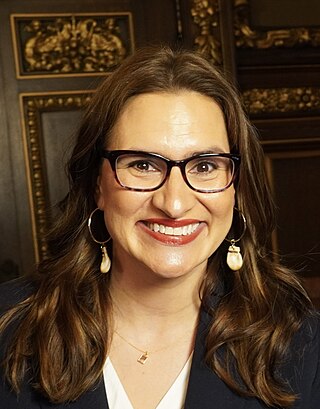
The lieutenant governor of Minnesota is a constitutional officer in the executive branch of the U.S. state of Minnesota. Fifty individuals have held the office of lieutenant governor since statehood. The incumbent is Peggy Flanagan, a DFLer and the first Native American elected to a statewide executive office in Minnesota's history.

The 1936 United States Senate elections coincided with the reelection of President Franklin D. Roosevelt. The 32 seats of Class 2 were contested in regular elections, and special elections were held to fill vacancies. The Great Depression continued and voters backed progressive candidates favoring Roosevelt's New Deal in races across the country. The Democrats gained 5 net seats during the election, and in combination with Democratic and Farmer–Labor interim appointments and the defection of George W. Norris from the Republican Party to become independent, the Republicans were reduced to 16 seats. Democrats gained a further two seats due to mid-term vacancies. The Democrats' 77 seats and their 62-seat majority remain their largest in history.

The 1962 United States House of Representatives elections was an election for the United States House of Representatives on November 6, 1962, to elect members to serve in the 88th United States Congress. They occurred in the middle of President John F. Kennedy's term. As in most midterm elections, Kennedy's Democratic Party lost seats to the opposition Republican Party, but retained a majority. House Democrats were expected to lose their majority, but the resolution over the Cuban Missile Crisis just a few weeks prior led to a rebound in approval for the Democrats under President Kennedy.

The attorney general of Minnesota is a constitutional officer in the executive branch of the U.S. state of Minnesota. Thirty individuals have held the office of Attorney General since statehood. The incumbent is Keith Ellison, a DFLer.

The secretary of state of Minnesota is a constitutional officer in the executive branch of government of the U.S. state of Minnesota. Twenty-two individuals have held the office of secretary of state since statehood. The incumbent is Steve Simon, a DFLer.
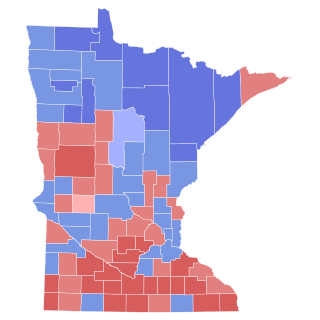
The 1962 Minnesota gubernatorial election was the closest statewide race in Minnesota history and one of the closest gubernatorial elections in U.S. history. The election was held on November 6, 1962, but the results were not known until March 21, 1963. The vote count after election day had Governor Elmer L. Andersen in the lead by 142 votes. Then-Lieutenant Governor Karl Rolvaag went to court and won the right to a recount. After the recount, it was determined that Rolvaag had defeated Andersen by 91 votes out of over 1.2 million cast. He received 619,842 votes to Andersen's 619,751.
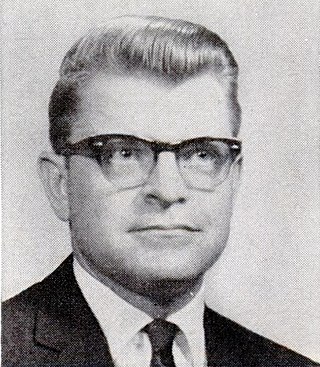
Alec Gehard Olson is a former member of the U.S. House of Representatives, a former state senator, who served as the 40th Lieutenant Governor of Minnesota. He was born in Mamre Township in Kandiyohi County, Minnesota.
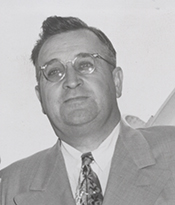
Herman Carl Andersen was a U.S. Representative from Minnesota.

The state treasurer of Minnesota was a constitutional officer in the executive branch of the U.S. state of Minnesota. Twenty-six individuals occupied the office of state treasurer from 1858 until the office's abolition in 2003. The final state treasurer was Carol C. Johnson, a DFLer.

The 1990 Minnesota gubernatorial election took place on November 6, 1990. Independent-Republican Party State Auditor and challenger Arne Carlson defeated then Minnesota Democratic–Farmer–Labor Party Governor Rudy Perpich, who had defeated Mike Hatch for the Democratic nomination. This remains the last gubernatorial election in Minnesota to date in which an incumbent governor ran for reelection to a third term.

The 1870–71 United States Senate elections were held on various dates in various states. As these U.S. Senate elections were prior to the ratification of the Seventeenth Amendment in 1913, senators were chosen by state legislatures. Senators were elected over a wide range of time throughout 1870 and 1871, and a seat may have been filled months late or remained vacant due to legislative deadlock. In these elections, terms were up for the senators in Class 2.

Kari Dziedzic is an American politician. A member of the Minnesota Democratic–Farmer–Labor Party (DFL), she represents District 60, which includes portions of the city of Minneapolis in Hennepin County. Her district is also notable for including part of the University of Minnesota. In 2022, she was selected by her caucus to serve as Majority Leader for the 93rd Minnesota Legislature. She stepped down from leadership after the first session due to a cancer diagnosis. Before elected office, she was executive assistant to U.S. Senator Paul Wellstone.

A general election was held in the U.S. state of Minnesota on November 8, 2016. All seats in the Minnesota Senate and Minnesota House of Representatives were up for election as well as Minnesota's 10 presidential electors and Minnesota's eight seats in the United States House of Representatives. A primary election was held on August 9, 2016.
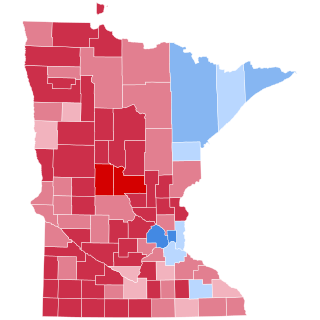
The 2016 United States presidential election in Minnesota was held on Tuesday, November 8, 2016, as part of the 2016 United States presidential election in which all 50 states plus the District of Columbia participated. Minnesota voters chose electors to represent them in the Electoral College via a popular vote, pitting the Republican Party's nominee, businessman Donald Trump, and running mate Indiana Governor Mike Pence against Democratic Party nominee, former Secretary of State Hillary Clinton, and her running mate Virginia Senator Tim Kaine. Minnesota has ten electoral votes in the Electoral College.

The 1968 United States presidential election in Minnesota took place on November 5, 1968 as part of the 1968 United States presidential election. Voters chose ten electors, or representatives to the Electoral College, who voted for president and vice president.

United States gubernatorial elections were held 6 November 1962 in 35 states, concurrent with the House and Senate elections.
Smiley v. Holm, 285 U.S. 355 (1932), was a decision of the Supreme Court of the United States involving a governor's power to veto a congressional redistricting proposal passed by a state's legislature. In an opinion by Chief Justice Charles Evans Hughes, the Court unanimously held that the U.S. Constitution did not prohibit Minnesota's governor from vetoing that state's redistricting map.





















